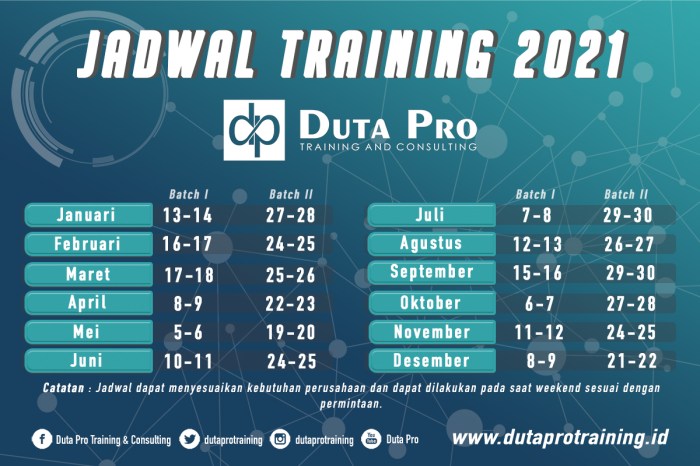Welcome to the Principles of Marketing Exam 1, where we embark on an exciting journey to unravel the core concepts and strategies that drive successful marketing campaigns. This exam will delve into the intricacies of market segmentation, product development, pricing, distribution channels, and more, equipping you with the knowledge and skills to excel in the competitive world of marketing.
As we navigate the chapters of this exam, we will explore real-world examples, case studies, and industry insights to illustrate how marketing principles are applied in practice. Get ready to engage in thought-provoking discussions, challenge your assumptions, and expand your understanding of the dynamic field of marketing.
Marketing Principles
Marketing encompasses the strategies and techniques businesses employ to understand, engage, and fulfill customer needs while generating revenue. Its core principles guide businesses in effectively reaching and influencing target audiences.
Understanding Customer Needs
Marketing begins with comprehending customer needs and desires. Businesses conduct market research, analyze customer data, and observe market trends to identify unmet needs and develop products or services that align with them.
Creating Value and Differentiation
Successful marketing involves creating value for customers. Businesses must differentiate their offerings from competitors by highlighting unique features, benefits, or experiences that meet specific customer needs.
Communicating Value
Effective marketing requires communicating the value of a product or service to the target audience. This involves developing and executing marketing campaigns that convey the benefits, features, and value proposition in a compelling and memorable way.
Building Relationships
Marketing is not merely about transactions but about building lasting relationships with customers. Businesses focus on providing excellent customer service, addressing customer feedback, and nurturing relationships through loyalty programs and personalized communication.
Market Segmentation and Targeting
Market segmentation and targeting are crucial strategies for businesses to effectively reach and engage with their desired customers. By dividing a broad market into smaller, more specific groups (segmentation) and focusing marketing efforts on specific segments (targeting), businesses can tailor their products, services, and marketing messages to meet the unique needs and preferences of each group.
Methods for Market Segmentation, Principles of marketing exam 1
Various methods can be used to segment markets, including:
- Demographic segmentation: Dividing the market based on factors such as age, gender, income, education, and occupation.
- Geographic segmentation: Segmenting the market based on geographic location, such as country, region, city, or neighborhood.
- Psychographic segmentation: Grouping customers based on their personality, values, interests, and lifestyles.
- Behavioral segmentation: Segmenting the market based on customer behavior, such as purchasing habits, brand loyalty, and usage patterns.
Examples of Successful Segmentation and Targeting
Successful market segmentation and targeting campaigns include:
- Netflix: The streaming service segments its market based on viewing habits, creating personalized recommendations for each user.
- Nike: The sportswear brand targets specific athletic segments, such as runners, basketball players, and fitness enthusiasts, with tailored marketing campaigns.
- Starbucks: The coffeehouse chain segments its market based on beverage preferences and offers different types of coffee and other beverages to meet the needs of each segment.
By understanding the different market segments and targeting specific groups, businesses can increase their marketing effectiveness, enhance customer satisfaction, and ultimately drive growth and profitability.
Product Development and Branding
Product development and branding are critical aspects of marketing that drive customer perception and purchasing decisions. This section will delve into the process of product development and the significance of branding, showcasing successful strategies that have shaped market landscapes.
Product Development
Product development involves a systematic process of creating, designing, and bringing new or improved products to the market. It typically comprises the following stages:
- Idea Generation:Identifying potential product concepts through brainstorming, market research, and customer feedback.
- Concept Screening:Evaluating and selecting the most promising product concepts based on feasibility, market demand, and profitability.
- Concept Development and Testing:Refining and testing product concepts with potential customers to gather feedback and validate assumptions.
- Business Analysis:Conducting a thorough analysis of the market, competition, and financial viability of the product.
- Product Development:Designing, prototyping, and manufacturing the physical or digital product.
- Test Marketing:Launching the product in a limited market to assess its performance and gather real-world data.
- Commercialization:Launching the product on a full scale and implementing marketing and distribution strategies.
Branding and Brand Management
Branding involves creating a unique identity and perception for a product or company. It encompasses various elements such as:
- Brand Name:A distinctive name that identifies the product or company.
- Brand Logo:A visual representation that symbolizes the brand.
- Brand Colors:Colors that are associated with the brand and evoke specific emotions.
- Brand Slogan:A memorable phrase that encapsulates the brand’s value proposition.
- Brand Personality:The human-like characteristics that are attributed to the brand.
Effective brand management involves maintaining consistency in all brand elements and ensuring that they align with the company’s values and target market. It includes monitoring brand perception, responding to feedback, and adapting to changing market conditions.
Examples of Successful Product Development and Branding Strategies
- Apple iPhone:Apple’s innovative product design, coupled with its strong brand identity and marketing, has made the iPhone one of the most successful products in history.
- Nike “Just Do It” Campaign:Nike’s iconic slogan and celebrity endorsements have helped establish the brand as a leader in athletic apparel and footwear.
- Amazon Kindle:Amazon’s e-reader revolutionized the book industry by offering a convenient and affordable way to access a vast library of content.
Pricing Strategies: Principles Of Marketing Exam 1

Pricing is a critical marketing decision that can significantly impact a company’s profitability and market position. There are various pricing strategies that marketers can employ, each with its unique advantages and disadvantages.
Factors influencing pricing decisions include production costs, market competition, customer demand, and the product’s perceived value. Effective pricing strategies consider these factors and align with the overall marketing objectives.
Cost-Plus Pricing
- Sets the price based on the product’s total cost, plus a desired profit margin.
- Simple and straightforward, but may not reflect market demand or competition.
Value Pricing
- Focuses on the value the product provides to customers rather than its cost.
- Effective for products that offer unique or differentiated benefits.
Competitive Pricing
- Sets the price based on the prices of similar products offered by competitors.
- Maintains market share and discourages price wars, but may limit profit margins.
Penetration Pricing
- Sets a low initial price to gain market share and establish brand awareness.
- Effective for new products or markets where demand is highly elastic.
Premium Pricing
- Sets a high price to target affluent customers or create an image of exclusivity.
- Effective for luxury products or products with a strong brand reputation.
Dynamic Pricing
- Adjusts the price based on real-time factors such as demand, competition, and customer behavior.
- Requires advanced technology and data analytics, but can optimize revenue and customer satisfaction.
Distribution Channels

Distribution channels refer to the various paths through which a product or service reaches the end consumer. Effective distribution is crucial for ensuring that products are available to consumers when and where they need them.
Let’s focus on the principles of marketing exam 1, where we’ll learn the fundamental concepts of marketing. However, for a brief interlude, let’s explore the moment of inertia of a trapezoid . It’s an intriguing concept that involves calculating the resistance of an object to rotational motion.
Now, let’s return to our marketing principles, where we’ll delve into strategies for reaching target audiences and building successful brands.
The selection of distribution channels is influenced by several factors, including:
- Product characteristics:Perishable goods require different distribution channels than non-perishable goods.
- Target market:The distribution channels should align with the target market’s shopping habits and preferences.
- Cost:The cost of distribution should be considered in relation to the value of the product.
- Competition:The distribution channels used by competitors should be taken into account.
Types of Distribution Channels
There are several types of distribution channels, including:
- Direct channels:The producer sells directly to the consumer, such as through online stores or company-owned retail outlets.
- Indirect channels:The producer uses intermediaries, such as wholesalers or retailers, to reach the consumer.
- Dual channels:The producer uses both direct and indirect channels to reach the consumer.
Successful Distribution Strategies
Successful distribution strategies involve carefully considering the factors mentioned above and tailoring the distribution channels to the specific product and target market. Some examples of successful distribution strategies include:
- Nike’s direct-to-consumer strategy:Nike has successfully increased its profit margins by selling directly to consumers through its online store and retail outlets.
- Amazon’s multi-channel strategy:Amazon has become a dominant force in e-commerce by offering a wide range of products through both direct and indirect channels.
- Walmart’s low-cost distribution strategy:Walmart has built its success on its ability to distribute products at low cost through its vast network of stores and distribution centers.
Promotion and Communication
Promotion and communication are essential elements of marketing, enabling businesses to connect with their target audience, create awareness, and drive sales. Various methods are employed to effectively communicate with customers, each with its own advantages and considerations.
Promotion Methods
- Advertising:Paid messages disseminated through various media channels (e.g., television, print, digital) to reach a wide audience.
- Public Relations:Strategic communication efforts aimed at building positive relationships with stakeholders, including media, influencers, and the public.
- Sales Promotion:Short-term incentives or discounts designed to encourage immediate purchases (e.g., coupons, loyalty programs).
- Personal Selling:Direct interactions between salespeople and customers, providing personalized product information and addressing specific needs.
- Direct Marketing:Targeted communication sent directly to individuals through channels like email, direct mail, or social media.
Communication Channels
- Traditional Media:Television, radio, print publications, and billboards reach large audiences but can be costly.
- Digital Media:Websites, social media platforms, and mobile apps offer targeted and interactive communication opportunities.
- Social Media Marketing:Leveraging social media platforms to engage with customers, build brand loyalty, and drive sales.
- Influencer Marketing:Partnering with individuals who have a strong following to promote products or services to their audience.
Factors Influencing Promotion and Communication Decisions
Several factors guide promotion and communication decisions, including:
- Target Audience:Understanding the demographics, psychographics, and behavior of the intended audience.
- Marketing Objectives:Defining the specific goals of the promotion, such as increasing brand awareness or generating sales.
- Product/Service Characteristics:The nature of the product or service influences the appropriate communication methods.
- Budget:Financial constraints often dictate the scope and reach of promotion efforts.
- Competitive Landscape:Analyzing competitor strategies and market trends helps inform decision-making.
Effective Promotion and Communication Campaigns
Successful promotion and communication campaigns often involve the following elements:
- Clear Messaging:Communicating a concise and memorable message that resonates with the target audience.
- Creative Execution:Employing engaging and visually appealing content that captures attention and drives engagement.
- Targeted Delivery:Using appropriate channels and methods to reach the intended audience effectively.
- Measurement and Evaluation:Tracking and analyzing campaign performance to measure ROI and identify areas for improvement.
Marketing Research
Marketing research is crucial for businesses to understand their customers, markets, and competition. It provides valuable insights that inform marketing decisions and drive business success.
Marketing research methods vary based on the research objectives. Some common types include:
Qualitative Research
- Focus groups: Gathering opinions and insights from a small group of participants.
- Interviews: In-depth conversations with individuals to explore their thoughts and experiences.
- Observation: Observing consumers’ behavior and interactions in natural settings.
Quantitative Research
- Surveys: Collecting data from a large sample size using questionnaires.
- Experiments: Testing the effects of different variables on consumer behavior.
- Data analysis: Analyzing large datasets to identify patterns and trends.
Marketing research is used in various ways to inform marketing decisions. For example, it can:
- Identify customer needs and wants.
- Segment markets and target specific customer groups.
- Develop and test new products and services.
- Optimize pricing strategies.
- Evaluate the effectiveness of marketing campaigns.
Marketing Ethics and Social Responsibility
Marketing ethics encompass the moral principles that guide marketers’ behavior in their interactions with customers, competitors, and society as a whole. Social responsibility, on the other hand, refers to the obligation of businesses to contribute to the well-being of society beyond their profit-making activities.
Ethical Responsibilities of Marketers
- Honesty and Transparency: Marketers must avoid deceptive or misleading advertising, ensuring that consumers have accurate information about products and services.
- Respect for Customer Privacy: Marketers must protect customer data and use it responsibly, respecting their privacy rights.
- Fair Competition: Marketers must engage in fair and ethical competition, avoiding practices that harm competitors or create monopolies.
- Environmental Sustainability: Marketers must consider the environmental impact of their products and practices, promoting sustainable consumption and reducing waste.
Social Responsibilities of Marketers
- Corporate Social Responsibility (CSR): Businesses can contribute to social causes and initiatives, such as supporting education, healthcare, or environmental protection.
- Philanthropy: Companies can donate funds or resources to charitable organizations, making a positive impact on society.
- Community Involvement: Businesses can engage with local communities, sponsoring events, volunteering, or providing employment opportunities.
- Ethical Sourcing: Marketers must ensure that products are sourced ethically, respecting human rights and environmental standards.
Challenges and Opportunities in Global Marketing
Globalization presents both challenges and opportunities for marketers:
- Cultural Differences: Marketers must understand and adapt to diverse cultural norms and values across different markets.
- Legal and Regulatory Differences: Marketers must comply with varying laws and regulations in different countries, which can impact marketing strategies.
- Global Competition: Globalization intensifies competition, requiring marketers to differentiate their products and services effectively.
- Increased Consumer Awareness: Consumers are increasingly aware of global issues, creating opportunities for marketers to appeal to their social and environmental concerns.
Examples of Ethical and Socially Responsible Marketing
- Patagonia: Known for its commitment to environmental sustainability, using recycled materials and supporting conservation efforts.
- TOMS Shoes: With its “One for One” model, the company donates a pair of shoes to a child in need for every pair sold.
- Ben & Jerry’s: The ice cream company actively supports social and environmental causes, advocating for fair trade and climate action.
- Nike: The sportswear giant invests in community programs and initiatives aimed at promoting physical activity and healthy lifestyles.
Clarifying Questions
What is the importance of market segmentation?
Market segmentation allows businesses to tailor their marketing efforts to specific groups of customers with similar needs and wants, increasing the effectiveness and efficiency of their marketing campaigns.
What are the key factors to consider when setting prices?
Pricing decisions are influenced by factors such as production costs, market demand, competitive pricing, and the perceived value of the product or service.
How does marketing research contribute to marketing decisions?
Marketing research provides valuable insights into customer behavior, market trends, and industry dynamics, enabling businesses to make informed decisions about product development, pricing, distribution, and promotion.

